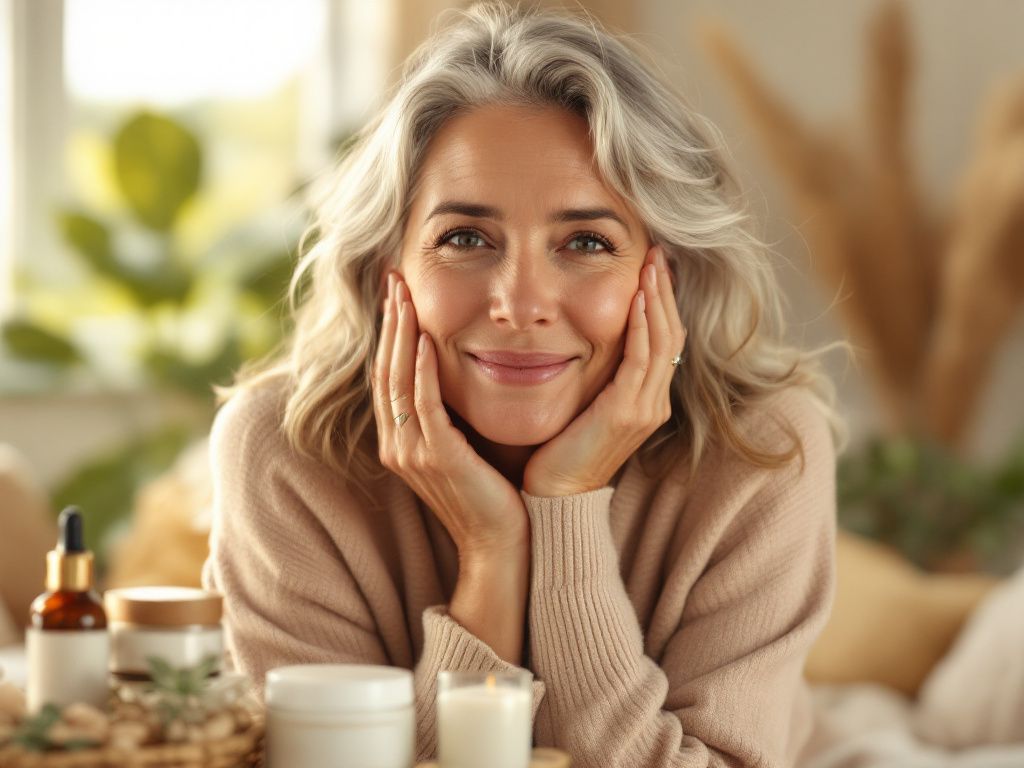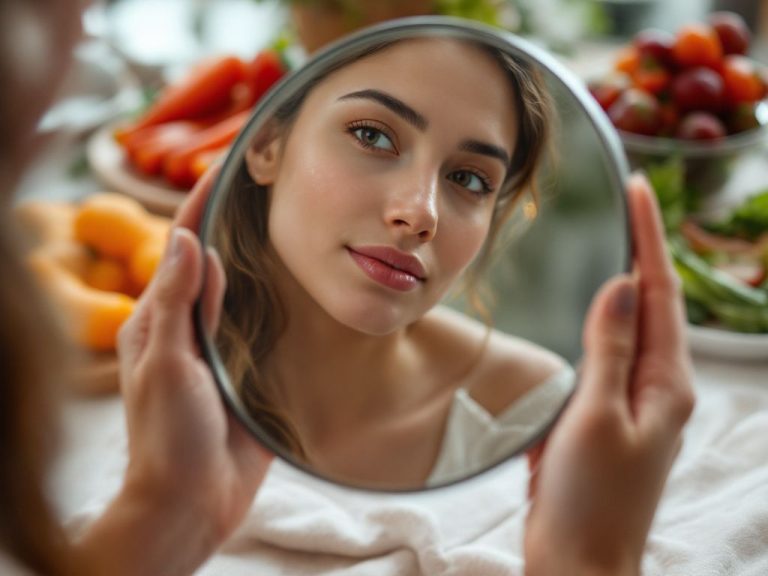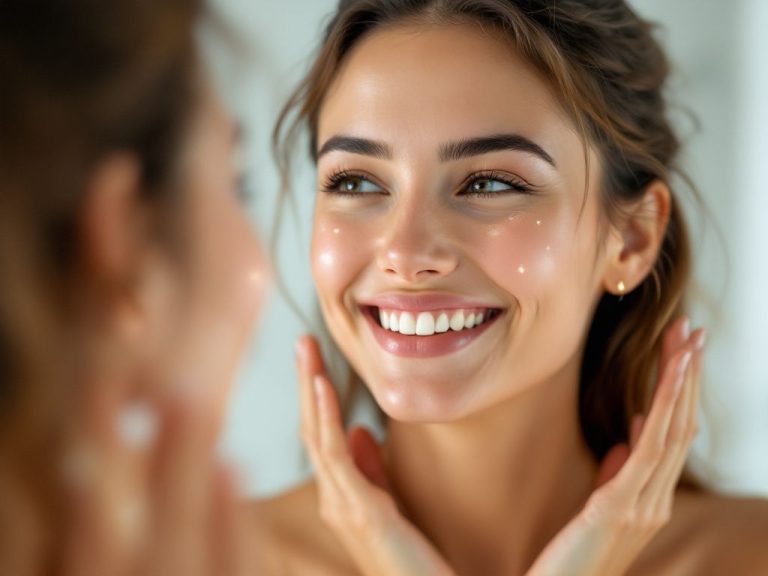Alright, let’s get real here. We’ve spent our teenage years dreaming of the day when acne would magically disappear, right? But fast forward a couple of decades, and guess what? There’s an entirely new skin conundrum that hits us. Enter the world of **aging acne** and **mature skin**. Frustrating, I know, but it’s something many of us deal with quietly. Let’s sit down with a cup of coffee and talk through it. No stress. Just a friendly chat about what’s really going on with our skin as time goes by.
Table of Contents
ToggleUnderstanding the Aging Acne Conundrum
You might be wondering why, after all these years, acne considers staging a comeback. It’s almost unfair, isn’t it? But there’s actually quite a bit going on under the surface—literally. As we age, our skin changes quite dramatically. It gets thinner, loses fat, and the once mighty collagen production slows down. This means our skin heals more slowly and is extra sensitive to external factors. Throw hormones into the mix, and you’ve got a perfect storm for pimples popping up, even in the golden years.
Why Acne May Reemerge in Later Years
So, let’s break it down simply:
- Hormonal Changes: Hormones aren’t just the culprits in our teenage years. They continue to shift as we age, especially around menopause. Fluctuating estrogen levels can trigger those pesky breakouts.
- Slower Cell Turnover: Our skin’s ability to rejuvenate doesn’t stay the same. While cell turnover slows, dead cells tend to hang around a bit longer, potentially blocking pores.
- Stress Factors: Let’s be real—life keeps happening. Stress doesn’t really vanish after a certain age; it just changes shape. Stress can lead to increased production of hormones, like cortisol, which contributes to acne.
- Lifestyle Choices: Things like diet, skincare habits, and general lifestyle can have an enormous impact. You might still be battling sugar cravings just like back in the day, with all the same skin repercussions.
Assessing Your Mature Skin
Before jumping into solutions, it’s essential to get familiar with your skin’s current state. Mature skin has its unique landscape that requires a personalized approach.

Identifying Characteristic Traits of Mature Skin
Here’s a step-by-step process to help you assess where you are:
- Feel The Texture: Your mature skin might feel a bit rougher over time. All stemming from the reduced production of natural oils and collagen.
- Check for Elasticity: Perform a gentle pinch test. Does your skin snap back, or does it linger a bit more than it used to?
- Observe Pores: With aging skin, pores might appear more enlarged, which is something newer in this phase of life compared to the taut days of youth.
- Look for Dark Spots: Age spots are another characteristically mature skin concern that may affect how acne flare-ups appear.
By understanding these elements, you’re in a better position to choose the right treatment regime. After all, one size most definitely does not fit all.
Building a Personalized Skincare Routine
Creating a skincare ritual that respects mature, acne-prone skin while aiming to rejuvenate it can be a game-changer. It’s all about blending the past with the present.
Step-by-Step Routine for Aging Acne-Prone Skin
Here’s a simple framework to get us started:
- Gentle Cleansing: Choose a non-drying, gentle cleanser. We want to lift away debris without stripping our skin of its much-needed moisture. Always err on the side of mild.
- Exfoliation Is Key: But tread lightly! Use a chemical exfoliant like AHAs or BHAs bi-weekly to promote cell turnover without aggravating the skin.
- Targeted Treatments: Incorporate a treatment serum targeting specific concerns. Retinoids are an anti-aging favorite, as is niacinamide. Both can improve skin elasticity while reducing acne flare-ups.
- Hydration & Moisture: A rich, non-comedogenic moisturizer keeps skin plump and reduces the appearance of fine lines.
- 5. **Sun Protection: Never neglect SPF! Even if the sun isn’t shining directly, UV rays are around, contributing to both aging and acne issues.
Three Essential Ingredients to Consider

Including these in your routine could work wonders:
- Hyaluronic Acid: Locks in moisture, essential for maintaining that plumped, hydrated skin feeling.
- Niacinamide: Forget about just nicotine in your multivitamins; here, it clears up skin blemishes and enhances the face’s general surface appearance.
- Peptides: They support collagen production and help repair skin at a molecular level to maintain a youthful glow while minimizing breakouts.
Lifestyle Factors That Influence Aging Acne
Skincare is only part of the journey. Let’s chat a bit about how what we do daily fits into this whole picture.
Nutrition & Hydration For Glowing, Clear Skin
What you put in your body matters as much as what you put on it. Maybe even more sometimes.
- Balanced Diet: Fill your plate with antioxidants—fruits, veggies, nuts, seeds—the usual suspects. They combat oxidative stress and are crucial for skin health.
- Stay Hydrated: Sure, it sounds cliché, but water is your best friend. Keeping hydrated helps your skin’s regenerative processes be as efficient as clockwork.
- Watch the Sugars: High-glycemic foods might be delicious but try moderation to avoid the insulin spike that can ignite acne pathways.
Stress Management Techniques

Even superheroes need downtime, and so does our skin. Reducing stress isn’t just beneficial for mental health; your complexion will thank you too.
- Mindfulness Practices: Activities like yoga or daily meditation can transform stress into something more manageable.
- Regular Exercise: It gets the blood pumping and delivers oxygen and nutrients to your skin cells—like a lifeline!
- Sleep Hygiene: Get at least 7-8 hours of good, quality sleep. The harm from a night or two of tossing and turning is visible on your face.
Aging Acne Guide’s Top Myths—Busted
Don’t you hate when misinformation leads you down the wrong path? Let’s clear the air with a few popular myths about aging acne.
Common Misbeliefs about Acne and Aging
- Myth 1: Acne Stops After Adolescence: We know that’s not true, so don’t let age dictate your skin expectations. Hormones, stress, and lifestyle choices play into acne regardless of age.
- Myth 2: Oil-Free Is the Only Choice: Mature skin often indicates dryness, which is why you should embrace oils in moderation. Certain oils are actually feeding skin essential nutrients without causing breakouts.
- Myth 3: Exfoliation Should Be Aggressive: Gentle, consistent exfoliation is key. Otherwise, you might do more damage than good by exacerbating inflammation.
A Friendly Reminder for Self-Compassion
Navigating skin changes doesn’t come with manuals, so it’s perfectly okay not to have it all figured out. Just understand this—delving into an **aging acne guide** is part of learning and growing.
Don’t overlook the power of consulting with dermatologists or skincare experts. Their professional insight can tailor an individualized approach considering age-specific factors and mature skin details. You’re not alone in this, no matter your age or skin predicament.
Pat yourself on the back for being proactive about your skincare story, one that turns its pages as you evolve. Your skin has its unique journey, destined to morph with you through time. Embrace it, and if a blemish or two sneaks in, remember—it’s just a small part of your ongoing, beautifully human narrative.
Frequently Asked Questions
What causes adult acne, and how does it differ from teenage acne?
Adult acne is caused by the same factors as teenage acne, including the combination of skin oil, dead skin cells, and bacteria that clog pores. However, adult acne is often influenced by additional factors such as family history, hormonal fluctuations, especially in women due to menstrual cycles and menopause, and other lifestyle factors like diet and skin care routines[1][3][4).
How can I prevent adult acne?
To prevent adult acne, it is important to use oil-free cosmetics, avoid friction from tight clothing or constant skin touching, and maintain a balanced skin care routine. Reducing or eliminating dairy and high glycemic foods from your diet and focusing on fruits, vegetables, and lean proteins can also help. Additionally, proper moisturization and avoiding the habit of picking or squeezing blemishes are crucial[1][2][4).
What treatments are available for adult acne, especially when managing both acne and aging skin?
Treatments for adult acne include topical treatments, a proper skin care regimen, and various pill therapies. For managing both acne and aging skin, it is recommended to use lightweight, non-comedogenic products that balance acne control with anti-aging benefits. Ingredients like retinol, alpha and beta hydroxy acids, and sun protection are particularly effective. It is also advisable to alternate between acne treatments and anti-aging products to avoid exacerbating either condition[2][3][4).
Does having acne affect the aging process of the skin?
Interestingly, skin with acne, particularly oily skin, tends to age more slowly due to the protective effects of sebum, which contains antioxidants, lipids, and antimicrobials. Studies have shown that individuals with a history of acne may have younger-looking skin and longer telomeres, indicating healthier cells[2].
References







